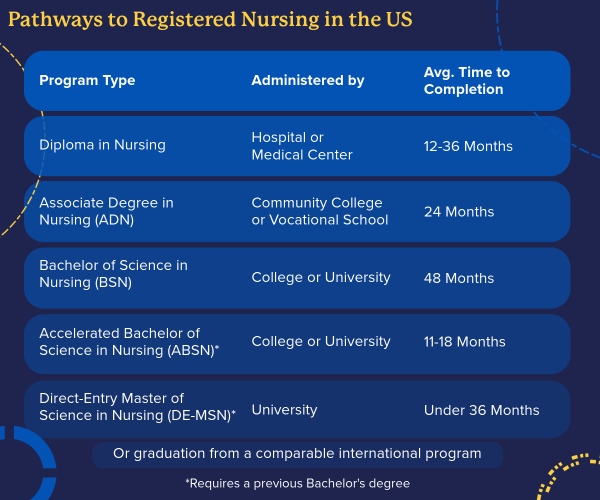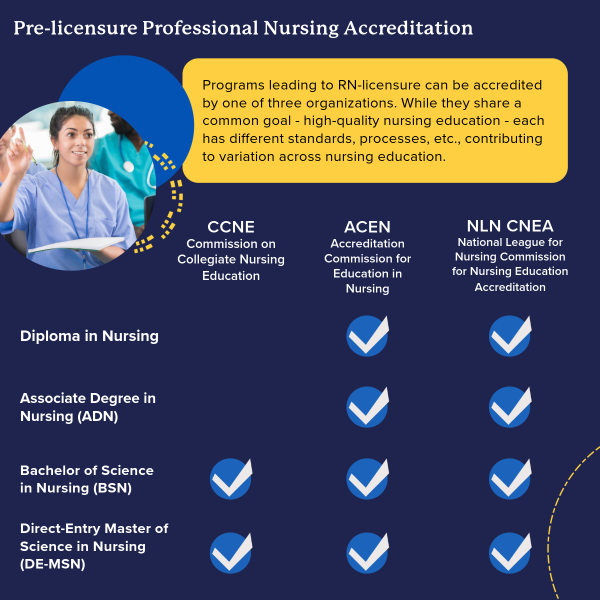
A Unified Approach: The Future of Nursing Education

Can we overcome the complexity of the nursing education landscape to build a unified approach to practice-readiness?
The average American walking into a hospital likely thinks that - personality and experience aside - all registered nurses (RNs) are equal in terms of education, knowledge, skills, and core competencies. However, this is far from the truth. With various pathways leading to the RN licensure exam (NCLEX-RN), each with its own curriculum and standards, the landscape of nursing education is diverse and, at times, disjointed. Research identifies these variances in preparation as ultimately leading to variances in patient outcomes - emphasizing the urgency for a unified approach to nursing education.
As healthcare continues to adapt to the increasingly complex nature of chronic disease management in the US and the interventions and technologies used to manage them, it's more important than ever for the nursing profession to unite to level the competency expectations for entry to practice in professional nursing. Doing so will reduce the burden felt by hospitals that increasingly have less money, staff, and time to dedicate to the on-the-job training of new graduate nurses because of poor retention, the shift towards value-based care, and workplace environmental issues. Historically, the onboarding and orientation of new grad RNs have also had considerable overlap with the educational programs from which the new nurses recently graduated, a redundancy that shouldn't be necessary.
The nursing profession has a long history of redefining itself. Still, a multitude of factors from both inside and outside the profession have prevented a full transition to the goal of BSN preparation for entry into practice established in 1965, when the American Nurses Association indicated that a bachelor's degree should be the entry-level degree for a registered nurse1. Fifty-nine years later, associate degrees and diploma programs are still available entry points for becoming an RN. Given the research on BSN-prepared RNs improving patient outcomes, why do these multiple entry points exist?
Well, it's complicated. Historically, nurses were trained in hospital training programs – the remains of which are known today as diploma programs. Next came associate degrees, from which the bachelor's degree eventually evolved. More recently, the direct-entry master's degree and accelerated BSN, both designed for students with a bachelor's degree in a non-nursing field, were also accepted by the profession, further convoluting the academic preparation pool for RNs.
Since the mid-1900s, regardless of the varied entry points, all RN candidates have taken the same licensure exam – today known as the NCLEX-RN. This nationally standardized exam is required for RN licensure in the US and is developed and overseen by the National Council of State Boards of Nursing (NCSBN), whose membership is comprised of the Boards of Nursing (BON) for all 50 states, 4 US territories, and the District of Columbia. Despite this consensus on examination, licensure rules vary by jurisdiction, and, in many, a diploma program is no longer considered a viable entry point.
Complicating the matter further, there are numerous professional nursing accrediting bodies: the Commission on Collegiate Nursing Education (CCNE), the Accreditation Commission for Nursing Education (ACEN), and the National League for Nursing Commission for Nursing Education Accreditation (NLN CNEA), with three different sets of accrediting standards and requirements. This results in a complex and confusing professional nursing ecosystem, from education to licensure.
The inconsistencies between state authorities and professional accreditors, as well as hospital preferences (often driven by hospital accrediting designations such as Magnet or Pathways to Excellence), have created competing interests in the debate on entry-level degree requirements. It is a debate that has no foreseeable end for many reasons:
-
Diploma and ADN programs are the more common entry point for nurses from lower socioeconomic and diverse backgrounds. It's vital to have this specific cohort entering the profession because research shows that when patients can relate to their healthcare provider, they are more likely to have better outcomes.
-
Diploma and ADN pathways are typically more affordable than a BSN degree. If the past few years of higher education trends have taught us anything, return on investment is top of mind for prospective students.
-
The persistent nursing shortage necessitates continuing to produce new nurses to fill job vacancies. Diploma and ADN programs typically have a shorter time to completion than a BSN program. Until the profession can retain bedside nurses longer or get more RNs to return to direct patient care jobs, the demand for more nursing professionals is unlikely to be met by pre-licensure BSN programs alone.
-
With a focus on safeguarding their autonomy, state boards and professional bodies have so far foregone establishing a nationalized standard for RN entry, aside from the NCLEX-RN.
However, collaboration is going to be the key to standardizing the competencies for entry while maintaining diversity within the profession.
It's clear that, for the time being, we need to work within our current system of offerings to determine what critical competencies an RN should have at the time of entry into the profession, no matter the degree. These core competencies need to be clearly defined and agreed upon by the major stakeholders: the state BONs, professional bodies, academic nursing, and employers. While a challenging endeavor, it's paramount to standardize key skills and competencies for entry into RN practice - not only for the impact on patient outcomes but also for the benefit of the nursing workforce - to bridge the academic-practice gap, reduce the burden of onboarding new nurse grads, and start ALL new entry-level nurses out in the profession competent and practice-ready.
How do we do that? In the next article in this series, I'll explore potential solutions for building consensus and propose a new way to look at how we track and measure competency.
Sources
- American Nurses' Association's First Position on Education for Nursing. (1965). The American Journal of Nursing, 65(12), 106–111. https://doi.org/10.2307/3419707

